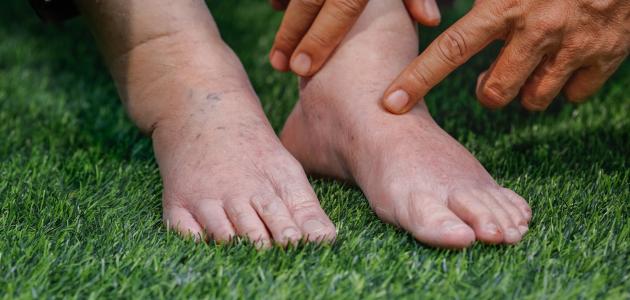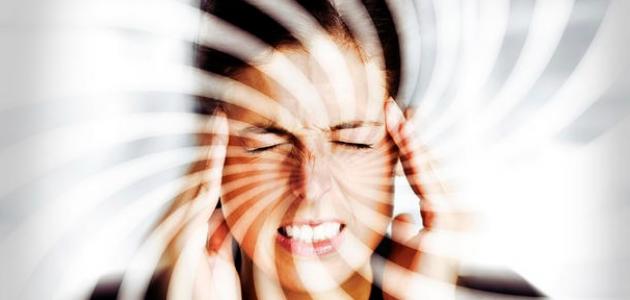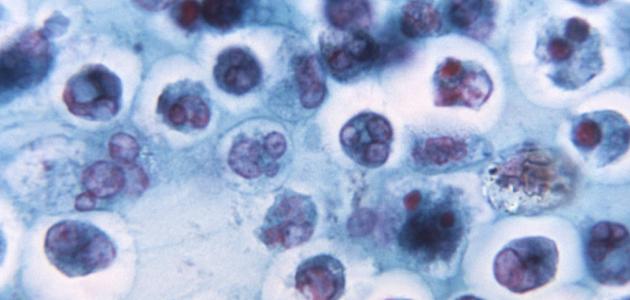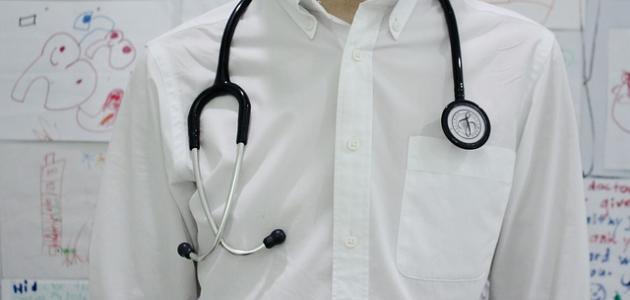An overview of the disorders of puberty
Puberty is defined as the stage in which a series of important natural and health changes appear on the child as a result of changing the levels of certain types of hormones in the body, which indicate his transition from childhood to adolescence, and this includes a group of emotional, psychological and social changes, and changes in the sexual organs For the child, the occurrence of physical development and growth inside and outside the body, and changes in the brain, and it must be noted that in some cases these changes and processes do not occur properly and as they really should be, and this condition is called puberty disorder.
It is worth noting that these hormonal changes often occur during the middle school years, but this varies according to individuals. Puberty may begin in a child early or late, so the signs of puberty usually begin to appear in females at an early age compared to males, and these psychological changes are related to And physical changes in the levels of certain hormones present in the body, as the stage of puberty and the reproductive system is controlled through a small area in the brain called the hypothalamus, from which several hormones are secreted, such as the absolute hormone of gonadotropins (in English: Gonadotropin Releasing). Hormone), abbreviated GnRH, which stimulates the secretion of follicle stimulating hormone (FSH) and luteinizing hormone (Luteinizing hormone) from the anterior pituitary gland, and these two hormones are directed to the gonads - the ovaries in the female and the testes in the Male - to stimulate the formation and secretion of sex hormones, namely: estrogen, progesterone, and Testosterone also supports the formation of gametogenesis, and it is worth noting that estrogen and testosterone contribute to the development of secondary sexual characteristics during puberty, which distinguish males from females, such as the appearance of facial hair and the development of muscle mass in males. Breast development and hip roundness in females.
Read also:How to stop the bleedingAccordingly, puberty disorders can be classified into two basic types. Late puberty is often a normal disorder, and it is then called structural delayed puberty. Precocious puberty may be secondary to hypothalamic stimulation, in which case it is called central or gonadotropin-dependent precocious puberty, or precocious puberty may be secondary to a change in the regulation of sex hormone production in glands, such as the adrenal gland or other tissues In this case, it is called peripheral, or non-gonadotropin-dependent, precocious puberty.
early puberty
Precocious puberty occurs when a group of changes begin to appear on the child's body at a very early age, which indicate puberty.
Implications for precocious puberty
In the case of early puberty, a group of symptoms and signs appear on the child before the age of 9 years in males, and before 8 years in girls, and the most prominent of these signs are: accelerated growth, the emergence of body odor similar to that of an adult, the appearance of hair in the pubic and armpit areas, and the growth and descent of breasts. The first menstrual cycle for the female, the enlargement of the penis and testicles, the growth of facial hair and the increase in the depth of the voice in males, and although the early and rapid growth of the child may make him taller compared to his peers in the first period, but at the end of puberty the growth and increase in height stops in the child in the absence of He undergoes appropriate treatment, due to the cessation of skeletal maturity and bone growth at an early age, which prevents him from reaching the maximum length that can be achieved in the normal state.
Read also:How to treat bruisesOn the other hand, a number of social and emotional problems face the child when he enters puberty early, for example, early puberty in girls causes embarrassment or turmoil about the menstrual cycle, or the growth of their breasts before other girls of their age, or dealing may become With the girl, it is different because she looks older, and it is worth noting that early puberty is also accompanied by the emergence of behavioral and emotional changes in the child. Or signs of early puberty on the child, you must visit the doctor and evaluate the health condition.
Causes of precocious puberty
The causes of precocious puberty are classified into two types: peripheral causes and central causes. In the case of central precocious puberty, puberty begins early in the child’s life, while the pattern of puberty steps and timing is normal. Most children who start central precocious puberty do not suffer from a problem Certain health conditions, or any specific reason that explains the occurrence of precocious puberty. Despite this, there are some rare cases of central precocious puberty that are attributed to a specific problem, such as the appearance of tumors or defects in the brain, or exposure to injuries to the spinal cord and brain. Peripheral precocious puberty, as it results from the secretion of estrogen or testosterone in the body as a result of the growth of tumors in the adrenal gland, congenital adrenal hyperplasia, the emergence of problems related to the pituitary gland, or exposure to testosterone or estrogen from external sources such as the use of creams and ointments that contain these Hormones, McCune-Albright syndrome, the appearance of tumors and cysts in the ovaries in females, or the appearance of tumors in the cells responsible for testosterone production in the testicles in men. for males.
Read also:Urinary tract infection symptomsCongenital adrenal hyperplasia is accompanied by a deficiency in one of the enzymes necessary for the production of certain hormones, so the enzyme deficiency makes it difficult to produce one or more of the adrenal gland hormones, which leads to an overproduction of another type of natural compounds of the hormone to compensate for the deficiency. McCune-Albright, it is a disorder that affects different parts of the body, such as the skin, bones, and many hormone-producing tissues. It should be noted that there are a number of factors that may seem related to the onset of early puberty, including the following:
- genetic factors: Precocious puberty sometimes occurs due to a specific genetic mutation that contributes to the secretion of sex hormones in the body. Often, a child with this genetic mutation has a parent or relative who carries the same genetic defect.
- Gender: Girls are XNUMX times more likely to develop central precocious puberty than boys.
- Obesity: As it is not known to what extent obesity is associated with early puberty, a number of studies have shown a link between obese young girls and an increased risk of early puberty, while there appears to be no relationship between obesity and early puberty in boys.
- Sweat: It was found that girls of African American descent start puberty one year earlier than other girls of the white race, and some experts have agreed that puberty is early among African Americans if it begins before the age of 6 years.
- International adoption: Children who are adopted from abroad are more likely to have precocious puberty than others, and the reason behind this is unknown.
delayed puberty
Delayed puberty occurs if signs of sexual maturity or secondary sexual characteristics do not appear on the child’s body at the age of 14 years in males, or 12 years in girls, such as voice changes, testicles or breast growth, and the appearance of pubic hair.
Implications for delayed puberty
Delayed puberty is one of the most common problems among males, and the problem can be identified in a male if the time interval between the onset of puberty and until the completion of the growth of the genitals exceeds five years, or when the testicles are not enlarged at the age of 14, but in the case of girls Delayed puberty is defined as the absence of menstruation until the age of 16 years, or the failure of breast development until the age of 13 years, or exceeding the period of time extending from the moment the breast development begins in a girl to the time of the first menstruation in five years.
The adolescent who suffers from delayed puberty often appears short compared to his peers, which may make him vulnerable to harassment and bullying from the people around him. Not only that, the possibility of feeling psychological tension and embarrassment as a result of delayed puberty is greater among boys in particular, so in some cases of delayed puberty It requires providing help and assistance to the child to overcome and control the social problems he faces, and since the symptoms of delayed puberty may be similar to the symptoms of some other health problems or conditions, a doctor should be consulted to diagnose the child’s condition.
Causes of delayed puberty
Delayed puberty is often common among members of the same family, so the child who suffers from delayed puberty has a relative who has also suffered from delayed puberty, and this problem in this case is called structural delayed puberty, and in the event of structural delay in puberty, the adolescent child grows normally On the other hand, delayed puberty may also occur as a result of a specific health problem, and some of these problems are as follows:
- Chronic diseases: Some children who suffer from chronic diseases such as kidney disease, diabetes, cystic fibrosis, or even asthma also suffer from delayed puberty, due to the fact that these diseases impede the growth and development of the child's body, so the use of appropriate treatment and control of These diseases may contribute to reducing the possibility of delayed puberty in a child.
- Suffering from malnutrition: As the child's failure to obtain all the nutrients necessary for the body, or not to eat sufficient amounts of food, may lead to a delay in puberty compared to other children who eat a healthy and balanced diet.
- Having thyroid problems: Delayed puberty may also occur as a result of the thyroid gland being exposed to a specific problem that affects its functions and production of hormones necessary for the growth and development of the body.
- Having a problem with the gonads: Delayed puberty may occur as a result of primary hypogonadism related to a problem in the testicles or ovaries, which impedes the production of estrogen or testosterone, and primary hypogonadism often occurs as a result of exposure to certain glands due to radiation, autoimmune diseases, or chemotherapy. surgery, infection, or as a result of a genetic disease, such as Turner syndrome or Klinefelter syndrome.
- A problem with the pituitary gland or hypothalamus: Exposing these glands to a specific problem may result in delayed puberty in a child, which is also called peripheral or secondary delayed puberty, as in the case of a lack of production of luteinizing hormone or follicle-stimulating hormone from the pituitary gland, or as occurs in the case of Kallmann syndrome, which Accompanied by a decrease in the secretion of gonadotropin-releasing hormone, or its complete absence from the hypothalamus gland, Kallmann syndrome is characterized by delayed puberty or non-occurrence, with a disturbed sense of smell.
Early breast development
In this case, the girl appears a small amount of breast tissue before the completion of the age of three years, and this is not associated with a rapid growth rate or an increase in the size of the breast. Estrogen hormone to disappear after that, but the effect of estrogen may continue on the breast for a long time, and it should be noted that this problem does not develop with time, and it does not have any other complications, so there is no need to use medications and treatment, and it is worth noting that this condition differs from precocious puberty Real.
Early onset of menstruation
This problem occurs in the event that the menstrual cycle begins in a girl without any signs of puberty, and it seems that most of the females who suffer from the problem of early menstruation have some separate menstruation that stops automatically, but irregularity may continue for some during puberty as well. It should be noted that both the girl's height and fertility are normal during puberty, but the development and maturation of the skeletal system does not appear normal in women with this disorder.
Premature anticipation
There is one adrenal gland above each kidney responsible for the production of hormones in the body, including the androgen hormone, which contributes to the occurrence of some changes in the body, such as the emergence of body odor, the appearance of pubic hair, and increased oily skin and hair. It is said that the child suffers from premature adrenocorticism, which is usually not a serious health problem. The most important characteristic of the symptoms of early adrenal insufficiency is the appearance of armpit hair and pubic hair in girls before the age of 8 years, and in males before the age of 9 years, in addition to the lack of development of the breasts in children. Girls, or lack of enlargement of the genitals in boys, in addition to the presence of armpit odor in children as in adults.
Diagnosis of puberty disorders
physical examination
A doctor usually begins to diagnose puberty disorders by taking a detailed medical history and conducting a comprehensive physical examination, which may include breast and pelvic exams.
Diagnostic tests
The doctor may recommend one or more tests, the results of which may help in accurately diagnosing the patient's condition. Some of these tests are explained below:
- Ultrasound: This method is used to examine the adrenal glands and to check the health of the ovaries.
- X-ray of the hand or wrist: This method is used to find out the age of the bones.
- blood tests: In some cases, the doctor recommends blood tests to determine the level of hormones responsible for starting puberty in the child's body, such as prolactin, adrenal hormones, chorionic gonadotropin, follicle-stimulating hormone, and luteinizing hormone. The doctor may also recommend another type of blood test. For an adrenal profile scan, this test measures the level of hormones that affect the development of a child's reproductive system, such as testosterone, cortisol, and estradiol.
- GnRH stimulation test: Through this test, it is possible to determine the form of early puberty in a child, whether or not it depends on the gonadotropin hormone, which is the hormone secreted by the pituitary gland with the stimulation of the gonadotropin-releasing hormone secreted by the hypothalamus in the brain, where the gonadotropin hormone stimulates the production of gonadotropins. Sex hormones from the body's gonads.
- MRI: In some cases, puberty disorders are caused by a head injury, cancerous or non-cancerous tumors growing on glands in or near the brain, or chemotherapy or radiation therapy for cancer, so doctors sometimes recommend an MRI to evaluate the condition of the brain.
- Genetic examination: The increase or decrease in the number of chromosomes as a result of genetic mutations may result in problems and disorders in puberty, so in some cases the doctor recommends a type of blood test known as karyotyping, as this test helps to know the number and arrangement of chromosomes, and thus it may contribute to the diagnosis Neuroendocrine disorders, and pituitary gland disorders that affect puberty in a child.
- Bone density test: The doctor may recommend a child's bone density test in certain cases, and this test is known as dual-energy x-ray absorptiometry (DEXA), this test determines whether delayed puberty has resulted in bone loss, This is likely to occur in some cases of delayed puberty in the child, and is accompanied by osteoporosis and increased susceptibility to fracture.
Treatment of puberty disorders
The type of treatment that is chosen in cases of puberty disorders depends on the individual’s situation in terms of the symptoms he suffers from, and the health problem or disease that causes this disorder. Among the treatment options offered in this field are the following:
- Regular check-ups and monitoring: This is recommended in cases where the disorder may improve on its own.
- Consultation: It helps children and families learn how to deal with the social and emotional challenges that accompany puberty disorders.
- hormonal therapy: Among the methods of hormonal treatment are the following:
- Hormonal suppressive treatment, as precocious puberty can be stopped or slowed by using drugs that prevent the secretion of certain hormones from the pituitary gland, and these drugs can be given to the child in different ways, injections may be given to the child every few months, or the surgical graft method may be used to suppress hormones in the body for a whole year This method can be performed in the doctor’s office, as he uses a small and flexible tube that contains the medicine, and inserts it directly under the skin using a local anesthetic. Before starting treatment, the doctor discusses the available options and helps to decide on the best treatment option for the child.
- Histrelin graft, which is one of the effective therapeutic methods for treating central precocious puberty, and the effect of this treatment lasts for a long period of up to a year, so the Histrelin graft reduces some of the problems that the patient may experience as a result of repeated use of injections, such as pain and discomfort, It is worth noting that when this treatment is used, there is a need to perform a small surgery, in order to complete the placement of the drug graft. The graft consists of tiny tubes, each of which is slightly more than 2.5 centimeters long, placed under the skin through a small incision in the inner part of the upper arm. These tubes begin to provide the drug gradually in the body, and after the end of the year, the graft is removed, or it is replaced with another if the need arises.
- Alternative hormonal therapy, as the delay in puberty caused by a lack of hormones can be treated by giving the child alternative sex hormones, which may be in the form of patches placed on the skin, or hormonal treatment taken by mouth, or even by taking regular injections, and to know the approximate period that the child needs For treatment and the expected results of treatment, and knowledge of the hormones involved, these matters should be discussed with the medical care team responsible for the child.
- Surgical and radiological treatment: It may be necessary in the event that there are tumors in the brain that stimulate the occurrence of central precocious puberty in the child, as removing the tumor does not guarantee the removal of all the symptoms that the patient always suffers from. On the other hand, the treatment of peripheral precocious puberty is completely different from the previous type, as its treatment depends mainly on The cause of the problem, medications can sometimes help in treatment, but in certain cases surgery may be necessary to remove the cyst or tumor formed in the testicles or ovaries.
Health problems associated with puberty
There are a number of health problems and diseases that may appear for the first time during puberty. Among the possible problems that may accompany puberty are the following:
- Gynecomastia: Hormonal changes that occur during puberty may result in the emergence of the problem of gynecomastia or enlarged breasts in males. It is worth noting that this condition is temporary, as it usually lasts for 6-18 months. Gynecomastia occurs when the age of about 13 years is reached, and it affects the Almost half of normal male children.
- STDs: The chance of contracting HIV and other sexually transmitted infections increases in cases where the adolescent engages in sexual activity during adulthood.
- Dysfunctional uterine bleeding: Cessation of ovulation may be one of the most common causes of abnormal menstrual bleeding among teenage girls, as some girls who have recently started menstruating have prolonged periods, heavy periods, or irregular periods.
- Vision changes: Myopia is one of the most likely vision problems in puberty, due to the growth of the axial diameter of the eye during this period.
- young love: The hormonal changes that occur during puberty result in the appearance of acne in many teenage girls and boys, and acne is defined as inflammation that affects the sebaceous glands and hair follicles in the skin, which often spread on the face, but may also appear on the neck or chest. back, or other parts of the body.
- Anemia: The concentration of hemoglobin and iron in the blood increases during the normal period of puberty in the case of males, but on the other hand it does not increase in females during this period. Teenagers tend to eat less iron-containing foods than males, in addition to losing blood during the menstrual cycle.
- Lateral scoliosis: This problem may become worse in adulthood, or it appears for the first time on the child during this stage, due to the increased speed of growth in adulthood.
- Musculoskeletal injuries: Adolescents may be particularly susceptible to musculoskeletal injuries in the growth spurt phase and during the growth of muscle mass in the body, since bone development usually precedes the stage of complete bone mineralization, adolescents are vulnerable to fractures, and in addition to this, the risk of sprains or strains in the child increases ; Due to the limited movement in some joints of the body as a result of the growth of the limbs, which usually occurs before the growth of the trunk area during adulthood.









